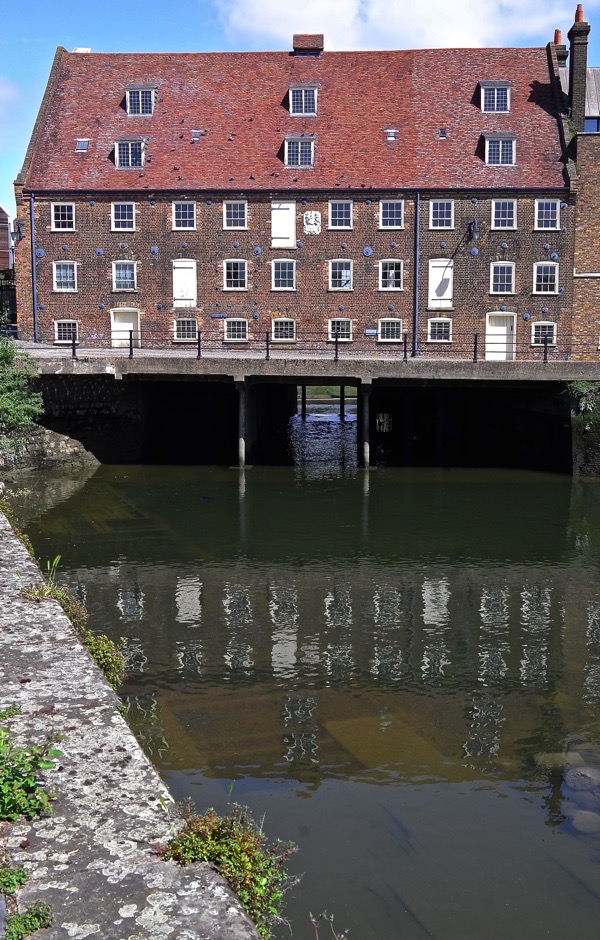
The House Mill of 1776 at Bromley by Bow is the largest tidal mill in the world and the only remaining mill at Three Mill Island on the River Lea, an artificial island created in ancient times – like Venice – by driving thousands of wooden stakes into the mud, for the purpose of harnessing the powerful tidal surge of the Thames. Daniel Bisson, a Huguenot, built the House Mill for grinding grain to bake bread and the manufacture of gin to supply London, and it functioned here until the end of World War II, before falling into disrepair.
Twenty-five years ago, William Hill saw the derelict mill from the train and came to explore. He became one of a group of committed volunteers who have been responsible for overseeing the magnificent restoration programme of recent years, and it was he who showed me round this week. We spent a couple of hours, climbing up and down ladders, and exploring every corner of the huge old mill, including those parts not open to visitors – enabling me to create this photographic record.


Initials of Daniel Bisson, builder of the mill, and his wife Sarah

View down the River Lea




Some of the beams at House Mill are one hundred foot long and may be recycled ships’ timbers








Nineteenth century wooden patterns for casting the machinery of the mill




Stretcher frames from World War I

Hopper where the grain was channelled down to the mill stones




The oasthouses and the clock mill

The Miller’s staircase

Millstones







Pegs where the millers hung their coats

Mill worker in the nineteen thirties

The same spot today

Iron frames for the nineteenth century mill wheels



The Clockmill
Visit The House Mill, Three Mill Lane, Bromley by Bow, London E3 3DU
Volunteers are always required to act as stewards, guides and to run the cafe at the House Mill. If you would like to help, please contact info@housemill.org.uk